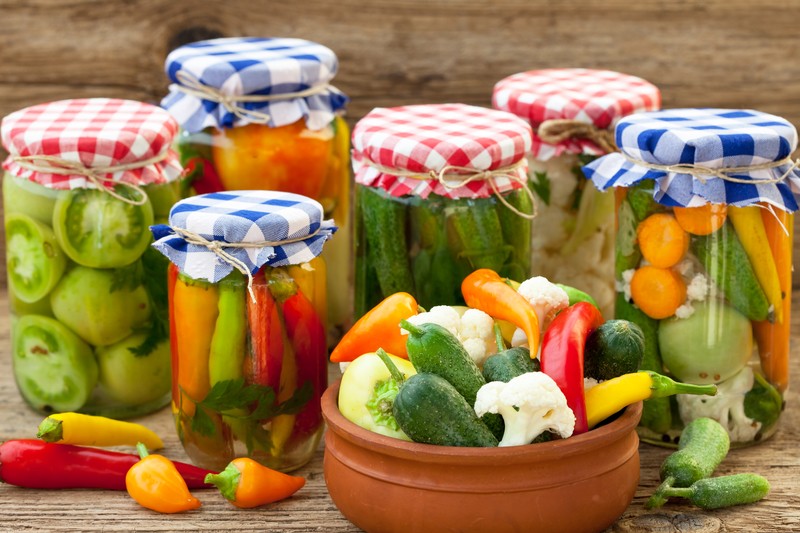If you're thinking of canning your excess food in order to reduce your grocery costs or stock up on your survival preps, good for you! Just make sure you do it properly, or you could quickly find yourself doubled over in pain. Read more below for some insight.
#1 Principles of Canning
Properly canned food is safe from botulinum contamination – but do it wrong and you’re playing Russian Roulette. Sooner or later, unless you take the right precautions, you’ll open a jar that has a colony of C. botulinum growing inside. If you notice the symptoms in time and can get to a good hospital it can be treated easily enough – but in a SHTF scenario you’re dead.
When you’re relying on your own resources the only defense against botulism is to can your food properly and prevent the bacteria getting a hold. The way to do that is to avoid these deadly mistakes:
#2 Canning Bacteria
The fewer bacteria go into the jar along with your fruit or vegetables, the lower the risk of a dangerous infection. That means you need to get the food as clean as possible before it goes into the jar. Vegetables that are directly exposed to soil probably won’t be clean enough even after scrubbing. Peel them instead, to make sure all soil residue and bacteria are removed.
#3 Forgetting the Acid
C. botulinum grows best in a non-acidic environment. Acid slows the bacteria’s growth and can even destroy them. Vinegar or lemon juice are good options that can also enhance the flavor. You don’t need to add enough to pickle the contents, but if you can push the pH of the liquid below 4.6 that will do a lot to keep your food safe.
#4 Keeping it Cool
Heat is one of the most reliable ways to destroy bacteria, including C. botulinum – if you use a high enough temperature for long enough. Fruit and tomatoes – acidic foods – can be safely canned using boiling water, because the botulism risk is low anyway. The same goes for other vegetables that have had acid added. Simple boiling doesn’t give any safety margin for less acidic foods, though. If you’re canning meat or low-acid vegetables the only way to ensure safety is to heat them to at least 240°F, and that means using a pressure canner. If you’re canning without electricity a pressure cooker can be used.
#5 Bad Seals
Check the seal on every jar before you store it. Press metal lids with a finger; if there’s any give in it, the jar isn’t properly sealed. For screw band type lids, you should remove the band and pull gently at the lid. If it’s sealed it will stay on the jar; if it comes off, refrigerate the contents or eat them right away.
#6 Sloppy Storage
Clear glass jars let light in, and that can discolor many canned foods. It’s not a serious problem but it does make them less appetizing. Store your jars somewhere dark – or, at the very least, out of direct sunlight.
Look for a cool place. Heat is essential during the actual canning process, but once your jars are sealed it becomes an enemy. Temperatures above 75°F can make vegetables turn mushy, and they also encourage microorganisms to grow.
#7 Forgetting to Check
Don’t just open a jar of canned food and dig in with your spoon. Check the container before opening; is anything cracked or distorted? Do the contents look discolored? Are there any signs of leaks? If you spot any of those things throw the food away. When you open the jar there should be a rush of air as the vacuum inside breaks; if there isn’t then the seal might have failed, and the contents aren’t safe. Also get rid of anything that spurts liquid or foam when you open it.
Botulism is not something anyone wants to mess around with, but if you perform the canning steps properly, it's not something you'll ever have to worry about.
Overall, canning is fairly easy and straightforward: clean the foods you're preparing to can, sterilize the jars and lids and make sure they're sealed nice and tight when all is said and done. If the lid doesn't pop when you open it, simply dump out the contents into the garbage; you don't want to take that risk. Good luck and have fun!
This helpful article is courtesy of Ask A Prepper, where you can find more on this subject and a plethora of other topics.

Canning is a science and should not be something someone just fakes their way through.
http://nchfp.uga.edu
Deanna Miller
Pee in a jar, put in whatever food you want. Open 1-50 years later and consume.
You should live your survival so that you’re ready. We have been canning for years.